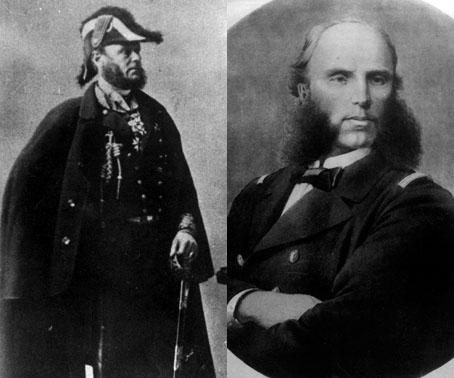At 07.50 the explorer warning sent in advance signals the approach from the NE of the Austrian team (seven armored frigates, seven non-armored units, nine gunboats and four wheeled warnings) of Admiral Tegetthoff; the landing is canceled, Piedmont with its 500 men heads for Manfredonia and the units of Admiral Persano scattered in the waters of the island try to arrange themselves on a front line perpendicular to the direction of the enemy with the team of Admiral Albini lingered in the rear. After having signaled to his units to take action, Admiral Persano transshipped the Sinker together with part of his staff without any signal, creating confusion for a time in the Italian deployment that presents gaps that the units struggle to fill. The Austrian admiral took advantage of this when he entered the Italian deployment. From this moment the action becomes a series of individual melees at close distances in which the spur plays an important role by canceling the greater firepower of the Italian artillery. The King of Italy rammed by Erzherzog Ferdinand Max sinks while the Palestro under fire will sink shortly after; on the Austrian side, the Kaiser vessel, reduced to a bad start by the combined action of the King of Portugal and the Sinker, leaves the battle heading for Lissa. Around 11.45 am the action ends and the two contenders try to rearrange their respective teams; at this juncture signals to Admiral Albini, who remained inactive during the fight, to hunt down the enemy have no effect so the two sides face each other, watching each other out of range until in the afternoon they retire without a stalemate. An unfinished battle; Persano is demoralized and Tegetthoff, satisfied with having freed Lissa from the Italian siege, has no intention of resuming the fight.
The clash is the first between armored ships to take place in Europe. The commander of the King of Italy, ship captain Emilio Faà di Bruno, and that of the Palestro, frigate captain Alfredo Cappellini, who disappeared with their ships after a bitter fight, will be awarded the gold medal for military valor in memory. The black handkerchief that Italian sailors still wear today indicates the mourning for the battle of Lissa. In the morning the flotilla of Commander Sandri, left without coal, is sent to Manfredonia in tow by Guiscardo, of Independence and of Washington, the latter with a load of wounded who will be landed in Ancona on the 22nd.
At 15 the day after, the units of Admiral Persano return to Ancona, welcomed by the population with indignation and hostility so that the crews are forbidden to go ashore. And this between the disappointment and the irritation of the officers and crews for the unhappy outcome of the clash of the morning of the previous day and the failure to resume the fight in the afternoon.
For this affair on Tuesday 31, Minister Depretis requires the Attorney General at the Supreme War Tribunal, lawyer Camillo Trombetta, to open proceedings on the day of Lissa in order to prevent the uncontrolled spread of accusations to the Navy and himself subjecting only the admiral Persano to criminal proceedings.
Source: Military Navy












